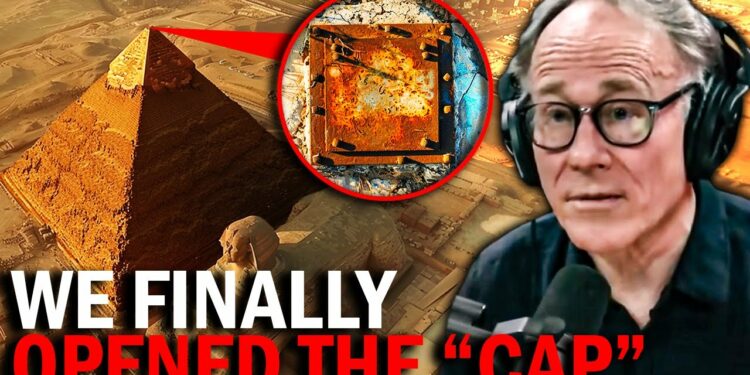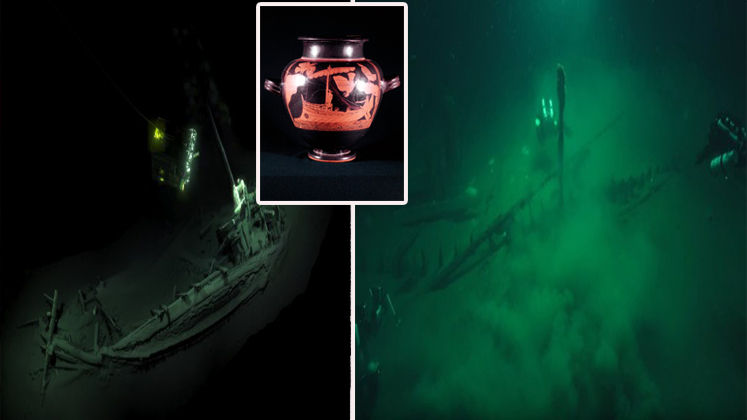The Great Pyramid of Giza, constructed during Egypt’s Fourth Dynasty for Pharaoh Khufu around 2580–2560 BC, is one of the most studied ancient structures, yet many of the other pyramids at Giza remain underexplored, with some not even having their bases fully cleared. This lack of investigation fuels questions about the historical narrative surrounding these monuments. The reality of the pyramids may be stranger and more fascinating than any fictional account.
For centuries, it was believed that the ancient Egyptians were the masterminds behind these architectural wonders. However, alternative theories suggest they may have simply occupied these colossal structures rather than built them. This exploration delves into groundbreaking theories, new discoveries, and challenges to conventional beliefs about one of the Seven Wonders of the Ancient World.
The Great Pyramid’s entrance, long a mystery, was originally concealed by smooth Tura limestone casing, most of which was stripped away over time. In 820 AD, Caliph Al-Mamun ordered an expedition to uncover its secrets. His workers reportedly located the hidden entrance 17 meters above ground on the northern face, slightly east of the central axis, after hearing a stone fall within the pyramid. This led to a descending passageway, 1.2 meters high and 3.5 meters wide, sloping downward at a 26° angle for about 105 meters to the Subterranean Chamber, or “the pit.” Carved into the bedrock, this unfinished chamber, roughly 27 by 4 meters and 8.6 meters high, has an unclear purpose, as no pharaoh’s burial was ever found in the Great Pyramid. Some speculate it was an early attempt at a burial chamber or an incomplete construction element.
From the descending passageway, an ascending passageway branches upward, similarly sized, extending 39 meters to the Grand Gallery. This steeply inclined corridor, 46.6 meters long, 8.6 meters high, and 2.1 meters wide at the base, features precisely cut stone walls and a corbelled ceiling. The floor includes slots, possibly for beams or to aid in moving heavy objects. Halfway along, a horizontal passage leads to the Queen’s Chamber, measuring 5.75 by 5.25 meters with a 6.25-meter-high gabled roof. Its purpose—possibly a secondary burial or symbolic chamber—remains debated.
Continuing up the Grand Gallery, a horizontal passage leads to the King’s Chamber, the pyramid’s most significant room. Measuring 10.5 by 5.2 meters with a flat granite roof, it contains a large granite sarcophagus, believed to have held Khufu’s body. Too large to fit through the passages, it was likely placed during construction. Above this chamber, five relieving chambers with massive granite slabs distribute the pyramid’s weight to prevent collapse.
Recent advancements, like ground-penetrating radar and muon tomography, have revealed new voids, such as the “Big Void” above the Grand Gallery, discovered in 2017 by the ScanPyramids project. Its purpose remains a mystery, sparking ongoing research. The Giza Plateau, surrounding Khufu’s Pyramid, has yielded significant archaeological finds, offering insights into ancient Egyptian burial practices, beliefs, and daily life.
In 1954, Egyptian archaeologist Kamal el-Mallakh uncovered solar boat pits near the Great Pyramid, containing two intact boats made of Lebanese cedar, assembled without nails using mortise-and-tenon techniques. The larger boat, 43.6 meters long, was reconstructed over 14 years and is displayed in the Khufu Boat Museum. These “solar barks” may have been intended for Khufu’s journey with the sun god Ra or used in his funerary procession.
In the 1990s, Zahi Hawass and his team discovered the tombs of pyramid workers southeast of the Great Pyramid. These revealed that the builders were paid laborers working in three-month shifts, with access to medical care and good nutrition, as evidenced by beef and fish bones, pottery, tools, and food remnants. The mudbrick and limestone tombs, some with hieroglyphic inscriptions, indicate respect for the workers.
In 1925, George Reisner uncovered the tomb of Queen Hetepheres I, Khufu’s mother, northeast of the Great Pyramid. Hidden under debris, it contained luxurious funerary items like a golden throne, gilded bed, and jewelry, showcasing royal craftsmanship. Her body was absent, suggesting her mummy was relocated or never placed there.
Excavations by archaeologists like Mark Lehner and Zahi Hawass have uncovered remains of Khufu’s pyramid temple, used for offerings and rituals to ensure the pharaoh’s immortality. The temple, connected to the pyramid by a causeway, included limestone blocks, column bases, statue fragments, and altars, shedding light on religious practices and royal iconography.
The tomb of Khentkaus I, discovered in the early 20th century southeast of the Great Pyramid, is sometimes called the “fourth pyramid” due to its unique design, combining a stepped pyramid base with an unfinished superstructure. These discoveries continue to deepen our understanding of ancient Egyptian civilization while raising new questions about the pyramids’ construction and purpose.






















